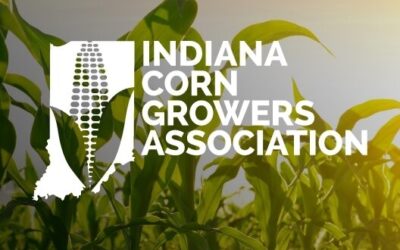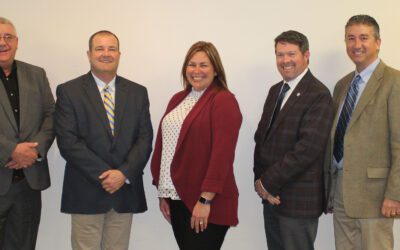Indiana soybean farmers learn about this year’s crops and agriculture in Argentina

INDIANAPOLIS, Ind. (Feb. 6, 2023) — Farmers can be found everywhere around the globe. And despite the crops they grow, the climates they live in or the challenges they face, many of these farmers share a passion for what they do.
Recently, from Jan. 21-29, several farmers from the Indiana Soybean Alliance (ISA) traveled to Argentina to see how soybeans are grown, processed and exported in the South American country. Argentina is the third-largest exporter of soybeans. In 2022, according to published reports, Argentina exported 4.8 million metric tons (mmt). Argentina’s leading customer, at more than 91 percent of its total exports, is China – also a top customer of U.S. soybean exports.
Despite these impressive numbers, what Hoosier farmers saw was a country that lacked much of the technology and equipment that U.S. farmers may take for granted. Indiana’s soybean growers talked to farmers in Argentina suffering from severe drought and draining economic conditions.
ISA CEO Courtney Kingery, who traveled with the farmers to Argentina, said she expected to see modern equipment, bins full of grain, large-scale farms and newer infrastructure. Instead, Kingery explained the group witnessed farmers in stress, repaired farm equipment kept in service despite its age and temporary silo bags in place of sturdy grain bins – among other differences.
“But, yet, when you get growers together, South American growers with Indiana growers, there’s also so much that is very similar between them,” Kingery said. “You saw their passion for agriculture; you saw their passion for the land; you saw the passion for their families and wanting to do the best they can do to take care of their land and take care of their crops.”
She added, “Argentina is different from an economic perspective; it’s different from an operational perspective, but the passion and heart of farmers is the same whether they are Indiana farmers or farmers in Argentina. And even though they are speaking different languages, they are still speaking the same language. That’s what was really interesting to me – that human connection.”
ISA board director Kevin Cox, a farmer from Brazil, Ind., said Argentina’s economic conditions create unique challenges for its farmers. “The poverty level in Argentina was noteworthy,” Cox stated. “The annual wage for skilled labor is only $3,600 per year. Argentina has a large middle class. Education is free for everyone – including college. So, the population is highly educated, but wages are still low. Despite the level of poverty, though, many things throughout the county seemed clean and modern.”
He added that the Argentinian farmers, families and people were welcoming and friendly. Cox said the farmers they met are optimistic for the future and had knowledge to share with their Hoosier counterparts.
“With all our advances in technological communications, language barriers can still be a challenge,” Cox said. “With patience, though, we were able to share general ideas. We also got some ideas of what we can do better when we host international trade teams in Indiana – to make them feel better and present the information in a way they can understand it.”
An overwhelming concern for farmers in Argentina is severe drought. Crops in late January in Argentina should look like crops in Indiana during late July. ISA board director Mark Legan, a farmer from rural Coatesville, Ind., said some farmers in Argentina were still planting. He said many of the fields they saw had distressed plants that may not recover.
“Some of the people that we talked to, who have been in the industry for long time, are looking at about a 40 percent decrease in production,” Legan said. “They should be setting a lot of pods on the soybean plants; the corn should be tasseling. About the tallest corn we saw was knee high or maybe waist high. So, they’re hurting. There’s no doubt about that.”
More than farms, the Indiana growers also toured a seed technology facility, the Argentina Ministry of Agriculture, the Bolsa de Rosario mercantile exchange, the Argentinean Soybean Association office, and Satus – a sister company of Purdue’s Ag Alumni Seed.
Among other things, Satus conducts research on industrial crops for companies in the Northern Hemisphere. Ag Alumni Seed, a hybrid popcorn seed company based in Romney, Ind., near Purdue University, works with Satus. During the tour, the Indiana farmers met Satus popcorn breeder Dr. Lujan Farace, who led them through the facility, their plant-breeding nursery and a demonstration of popcorn planting.
“I found it interesting that Ag Alumni Seed was there looking for ways to protect popcorn plants from diseases that we don’t have in the U.S.,” said ISA board director Larry Rusch, a farmer from Vincennes, Ind. “Some may believe this is counterproductive to farmers, but we think this information will help the researchers and seed breeders know what will help Indiana farmers.”
Legan added, “The visit to Ag Alumni Seed research in Argentina was interesting. We learned how they, and other seed companies, can carry out seed-breeding programs in the Southern Hemisphere to hasten genetic improvement of varieties and hybrids, especially those not using GMO or CRISPR techniques.”
The Indiana farmers toured Grupo Don Mario Seeds, an ag technology company that also specializes in plant genetics including soybean research, development and commercialization services. More than one-third of all worldwide soybean production includes genetics from Grupo Don Mario Seeds, which is based in Buenos Aires.
At the Bolsa de Rosario, the Indiana farmers walked through the historic mercantile exchange that was founded in 1884. Bolsa de Rosario serves as a forum for trade negotiations of several markets including grain, oilseed, agricultural products and by-products as well as securities and other assets. The region around Rosario contains the world’s largest concentrations of oilseed crushing plants. The ports in this area handle more than 90 percent of the exports of soybeans from Argentina.
Indiana’s farmers also visited one of the largest grain terminals on the Parana River, which is owned and operated by Louis Dreyfus Company. A global company, Louis Dreyfus also has a soybean-crushing plant in Claypool, Ind. Argentina’s port system is the link between production and the global markets for the country’s agricultural supply chain – 90 percent of their crops are moved to the ports by truck.
Talking with the farmers in Argentina was a primary focus of this trip for the ISA farmers and staff. One of the farms they visited belonged to Alejandro Calderon in the Pergamino area. The main crops on the Calderon farm include soybeans, corn, wheat, barley and green peas. Calderon plants his crops on approximately 800 acres. He also raises Red Angus beef cattle, and the farm provides bulls to beef cattle ranches throughout the Pampa region of Argentina. The Calderon farm, like many, suffered from drought, but it is making ends meet through diversification.
“It was very interesting to see how a large-scale grain farm in Argentina operates,” said ISA board director Allen Buchanan, a farmer from Fowler, Ind. “Their efficiencies are similar to ours, but some things they do are very different to the way we do it in the U.S.”
ISA board director and Bremen, Ind., farmer Joe Stoller added, “One thing I noticed was just how little technology some of the equipment that we saw had. I think we saw one or two tractors in the field with auto-steer. At home, that’s pretty common anymore.”
Kendallville, Ind., farmer Tom Griffiths, who also is a director on the United Soybean Board (USB), said many people don’t value what they have until they meet people who live without those benefits. He said American farmers benefit from a national soybean checkoff program.
“U.S. farmers sometimes question the value of our checkoff. And, in all honesty, the most well-versed state and USB directors might find it challenging to explain those benefits to a skeptical producer in the States,” Griffiths said. “The reason for that is there are so many projects that drive value and demand of soybeans. Many times, farmers have become complacent with the checkoffs’ successes – always waiting for the next big demand driver.
While in Argentina, I saw the expressions on the faces of Indiana’s new board directors as they realized, first-hand, the challenges of a soybean powerhouse like Argentina, which does not have the support of a national checkoff. Indiana’s checkoff directors now understand how important their future decisions are to our continued success. As in life, sometimes it’s easier to see what you have, after you see and experience those without.”
For all questions contact: Dave Blower Jr. at 317-644-0980; dblower@indianasoybean.com
About Indiana Soybean Alliance: The Indiana Soybean Alliance works to enhance the viability of Indiana soybean farmers through the effective and efficient investment of soybean checkoff funds that protect and promote the interest of Indiana soybean farmers. The ISA works to assist soybean farmers through its strategic initiatives of market development; environmental, social and economic sustainability; value creation and producer engagement. ISA is led by an elected, farmer board that directs investments of the soybean checkoff funds on behalf of more than 20,000 Indiana soybean farmers. Learn more at www.indianasoybean.com
This communication was funded with Indiana soybean checkoff dollars.
Posted: March 20, 2023
Category: Indiana Corn and Soybean Post - Winter 2023, ISA, News




